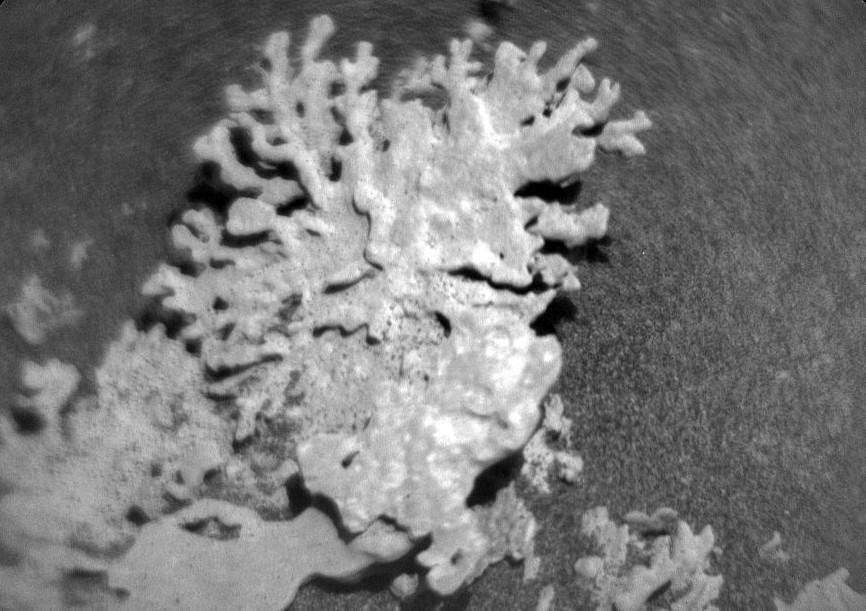
Coral-shaped rock spotted on Mars, NASA shares pic
NASA’s Curiosity Mars rover has made another remarkable discovery on the Red Planet, sending back black and white images of a rock on the Martian surface that bears an uncanny resemblance to a piece of coral. The rock, which was found in the Gale Crater, a large impact basin on Mars, is estimated to be around a billion years old.
The discovery was made possible thanks to the rover’s ChemCam instrument, a laser-induced breakdown spectroscopy (LIBS) instrument that is used to analyze the chemical composition of rocks and soil on Mars. The instrument uses a high-powered laser to vaporize a small sample of the rock, and then analyzes the resulting plasma to determine its chemical makeup.
The ChemCam instrument has been a crucial tool for the Curiosity rover, allowing it to analyze rocks and soil on Mars that are billions of years old. The instrument has been used to study the geological history of Mars, including the planet’s ancient past and its transformation into the barren, rocky world we see today.
The coral-shaped rock is just the latest in a series of fascinating discoveries made by the Curiosity rover. Since its arrival on Mars in 2012, the rover has been exploring the Martian surface, studying the geology and searching for signs of life.
The rover’s findings have been a crucial part of our understanding of Mars, and have provided valuable insights into the planet’s history and evolution. From its towering mountains to its vast plains, Mars is a fascinating and complex world that is still largely unexplored.
The coral-shaped rock is just one of many remarkable features that the Curiosity rover has discovered on its journey across Mars. The rover’s findings have been a crucial part of our understanding of the planet, and have provided valuable insights into the geological history of Mars.
So, what is the significance of the coral-shaped rock? The rock is believed to be a billion years old, and is thought to have formed in a very different environment than the one we see today. The rock’s coral-like shape is likely the result of millions of years of erosion and weathering, which has worn away the rock’s surface and created its unique shape.
The discovery of the coral-shaped rock is also significant because it provides further evidence of the geological activity that has shaped Mars over the past few billion years. The rock’s presence suggests that the area where it was found was once a wet and dynamic environment, which is in contrast to the barren, dry landscape we see today.
In conclusion, the discovery of the coral-shaped rock on Mars is a significant find that provides further insights into the geological history of the planet. The rock’s unique shape and age offer valuable clues about the planet’s past, and its discovery is a testament to the incredible technology and determination of the NASA team that has made it possible.
Source:
https://www.jpl.nasa.gov/images/pia26634-curiositys-chemcam-views-a-rock-shaped-like-coral/






